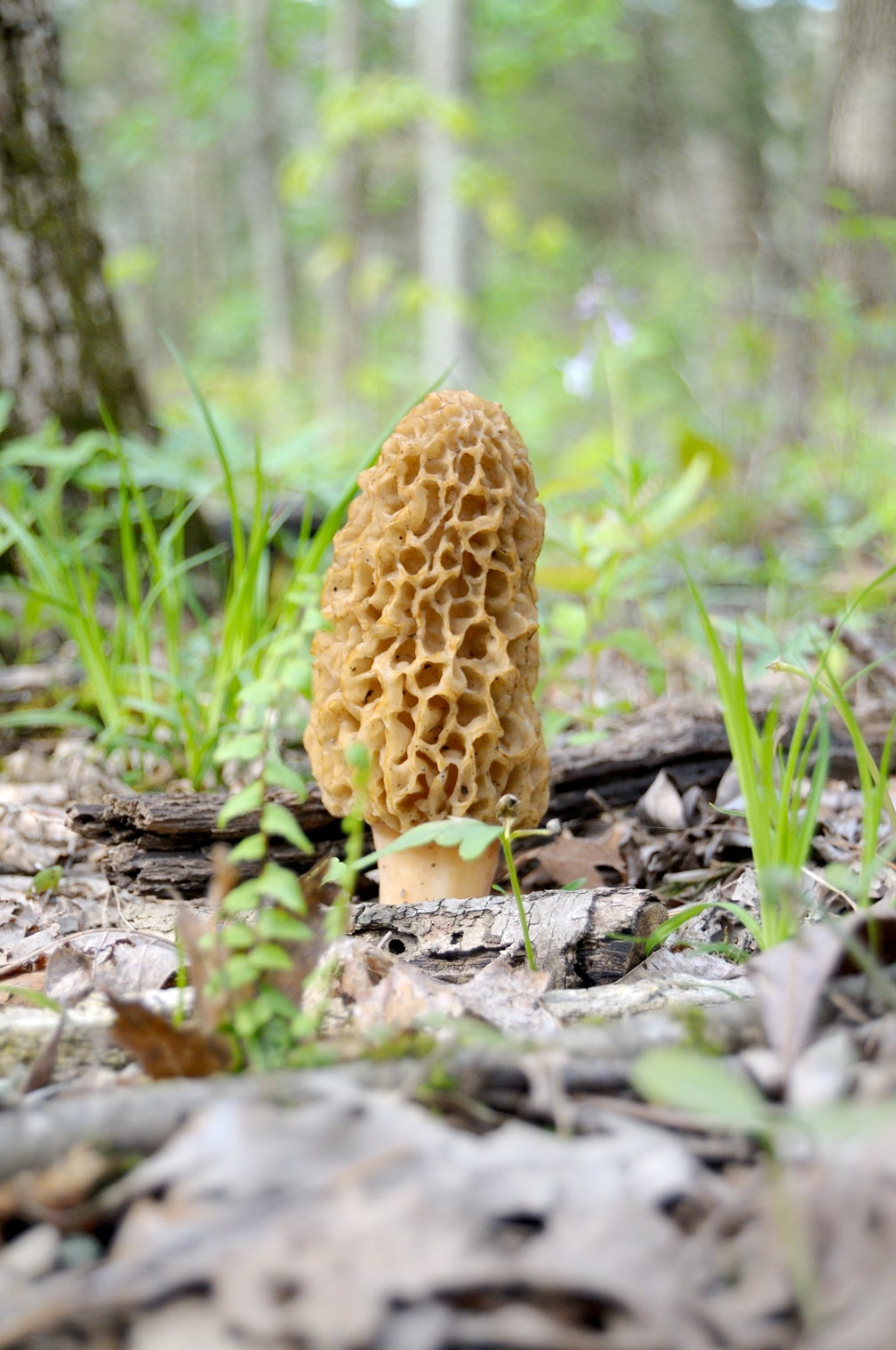By Tisa Conway-Cunningham
Cue the charcoal and the woodchips, and ready the smokers. We celebrated the longest day of play in June, so we are officially into summer. This summer has already been a scorcher, with temperatures in the 90s and heat indexes over 100 degrees. So instead of turning up the heat in the kitchen, there is no better time to enjoy the delicious reward of cooking outside on our grills, smokers, campfires and firepits.
With all cooking spaces, the first things to consider are safety and sanitation. Heat resistant gloves, oven mitts and/or kitchen hand towels can create easy barriers to avoid accidental burns. Reusable heat resistant gloves are inexpensive and offer a wide range of resistance to heat based on your specific heat temperature levels. They are durable, easy to clean and provide that extra safety measure to ensure that the only things cooking in our outdoor kitchens are food ingredients.
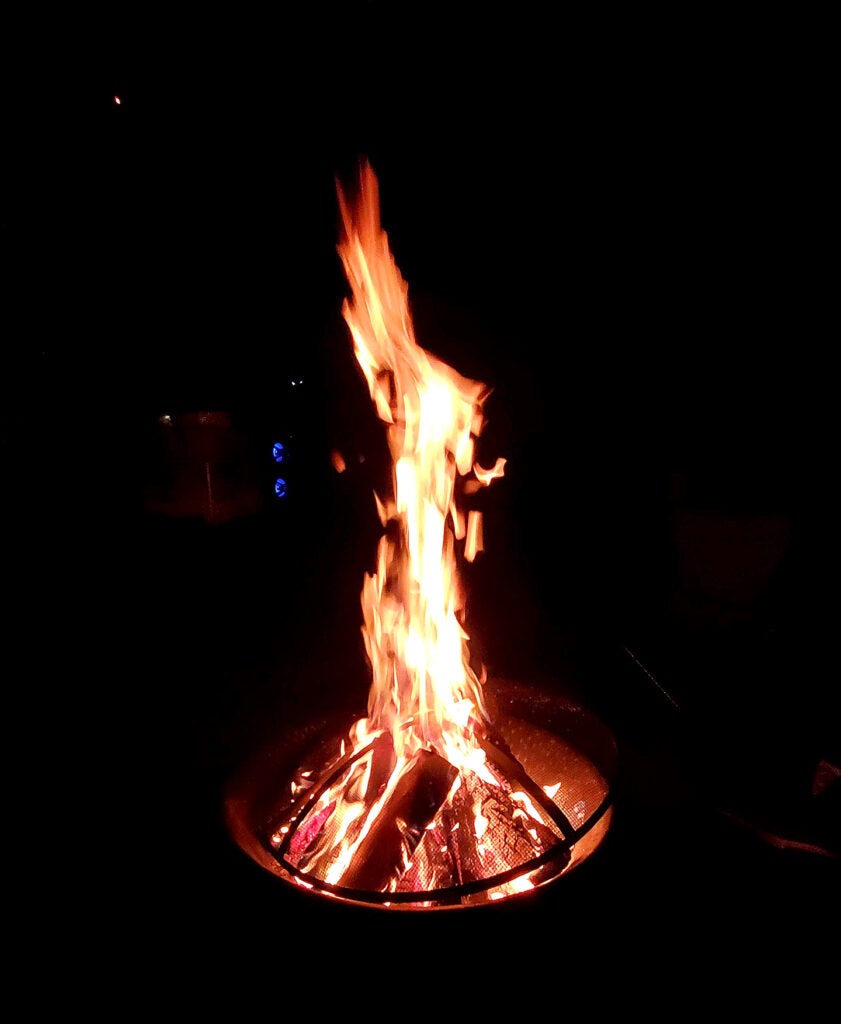
Oven mitts, hand towels and potholders provide safe ways to transport pots and pans, safe ways to transport food and contribute to keeping your space organized and free of clutter. Sanitation stations can easily be set up by using little totes, buckets or bowls (whatever is available) to create a sanitized water wash bucket and a rinse bucket. With the addition of a few kitchen rags, sponges, or hand towels, you will be well on the way to creating a cooking outdoor space that is safe to navigate and properly sanitized to keep a healthy cooking and dining environment.
Outdoor cooking, you said. I know. It can be a hassle in the initial planning and setup, but this article is dedicated to quick and easy solutions to create delicious meals outdoors. One easy way to expedite outdoor cooking is to consider the tools (cooking essentials) that can add value to outdoor cooking spaces. First, consider your heating source. While some prefer charcoal grills or smokers, others swear by propane, or gas-powered grills and griddles. Whatever your forte, each provide easy and stable outdoor cooking solutions.
The initial cost to purchase grills, griddles and smokers can take a hit to your pockets, but if properly cared for, each will lend itself to years of optimal outdoor cooking experiences. Grills, griddles and smokers provide containable and controlled heat sources and come with built in cooking surfaces. These ready-made solutions make it easy to place food to heat for cooking, can contain multi-levels of space, and can offer stove ranges that open the door for a few different cooking techniques within one tool, which adds a wealth of value.
Ribs, steaks, brats, chops, briskets, hamburgers, hotdogs, pulled pork, turkey legs — meat is important when considering what outdoor heating source will be sufficient to properly cook your meal. So much so, that the primary focus becomes the meat, but it is important to point out that side dishes at a barbecue or cookout are equally important. Both meats and sides are needed to create a balanced and nutritious meal for your family. So, it is important to consider how you want to cook potatoes, zucchini, squash, green beans, greens, baked beans and corn on the cob.
Are we thinking potato salad or grilled potatoes and onions? Are we making lemon pepper asparagus or are we thinking grilled zucchini and squash? The beans? Are we thinking of simple baked beans or are we thinking rodeo beans? The truth. All these side dishes are easy to navigate on grills, smokers and on griddles. Minus the potato salad. Even though I am sure there are some gnarly grilled potato salad recipes, sometimes it’s best to not play around with the potato salad. Nothing makes a cookout, or a barbecue come together, like a good southern potato salad. Figure out who makes the best potato salad and make them the designated potato salad maker.
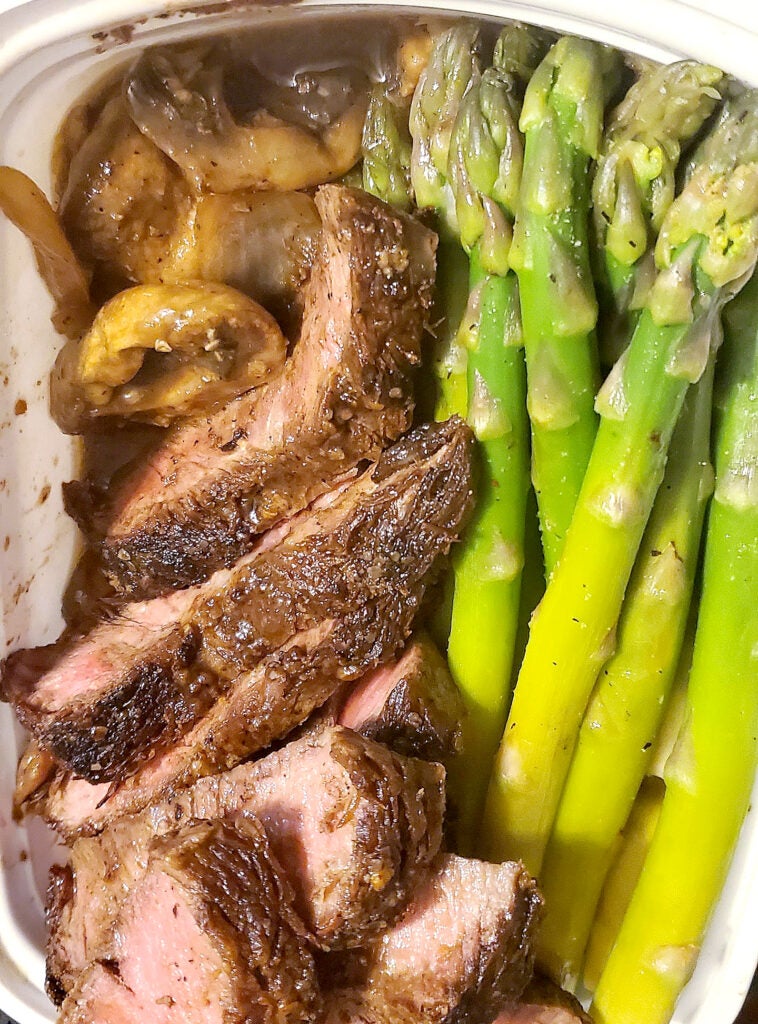
“If it ain’t broke, don’t fix it,” said someone wise.
I am a firm believer that some things just need to stay traditional and potato salad is one of them. The point — stop messing with the potato salad.
Next, think aluminum foil, cast irons skillets, Billy tins, long tongs, cutting boards, knife kits and alternative heat sources. Again, the initial cost may hit your pockets, but the benefits outweigh the cost.
Aluminum foil is life when it comes to outdoor cooking. It is versatile, makes it easier to clean up, and can be used during all aspects of cooking outdoors. It’s giving, prep, cooking, clean up and storage. Aluminum foil is one of the most essential and inexpensive tools you will use for outdoor cooking. There is a good amount of prep work that can happen when making plans to cook outside. Think bourbon glazed salmon and lemon pepper asparagus pouches or think about maple glazed pork chops with honey grilled peaches. Both recipes can be carried out easily with aluminum foil.
The peeling, cutting, chopping, marinating and seasoning become simple when aluminum foil is folded into pouches. Meats and marinades are placed into the pouch alongside the vegetables and fruit accompaniments. Add seasoning, flavor enhancers and fold pouches to close, and you have a cooking vessel that is prepared for the grill, smoker, griddle or campfire. The foil keeps the meat juicy, cooks the vegetables and fruit to perfection and locks in all that flavor.
If you are like I am, right now you are thinking about the infinite possibilities and food combinations you can cram into a foil pack. If that was not easy enough, foil packs can be brought pre-made. For a little extra coins, someone does all the folding for you. I know.
This is a game changer, so do not forget the aluminum foil when you are shopping at the grocery store.
Cast iron skillets are another versatile tool that can enhance your outdoor cooking adventures. PSA: Please make sure that your cast iron skillet is properly seasoned before you use it. Also, please do some research on best practices when you are cooking with a cast iron skillet. Once you figure it out, the cast iron skillet will become your best friend whether indoor cooking or out.
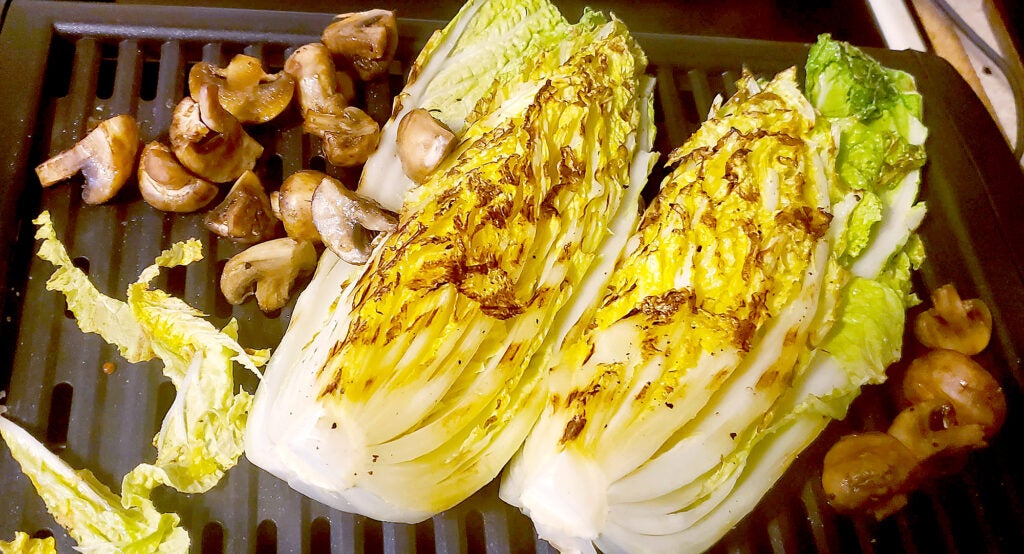
Some of the best food ever was/is cooked in a cast iron skillet. Think, crispy southern fried chicken, collard greens and hot water cornbread. When I said versatile, I meant versatile. Cast iron skillets can be used for breakfast, lunch, dinner and even dessert. It is also good when executing one pot meals like chicken, sausage and Brussel sprouts, open fire pan pizza or tamale pie with brown butter cornbread crust.
For breakfast try baked eggs with creamy greens, mushrooms and cheese, sweet potato breakfast hash or yeast raised biscuits and gravy. Some sweets include cobblers, skillet cookies, hummingbird skillet cakes and brownies. All of this could be achieved in a single cast iron skillet. So, think how easy it would be to pack one pan to cook over the fire at the campgrounds or how easy it would be to cook your rodeo or baked beans right on the grill in your cast iron skillet. Salsa corn cakes, rhubarb crisp, German apple pancake, mac and cheese, pan fried or seared fish — the cast iron skillet is versatile enough to do it all.
Billy tins, Billy cans or Billy pots are light weight metal pots that can be used to transport and boil water, make tea or coffee, and to cook. Billy tins are a staple tool that has been used by the military, campers and outdoor enthusiasts. They can be bought or simply constructed from tins, cans and other metal containers on hand. Like cast irons, Billy cans come in multiple shapes and sizes, and can be easily used in outdoor cooking spaces. Making bread is a chore but think of making bread over a campfire. Lemon chicken orzo, shrimp or seafood boils, chili con carne with sweet golden cornbread or tasty Kentucky burgoo can all be achieved with the use of a Billy tin. If it is cooked in a pot, then it can be cooked outdoors with this cooking vessel.
There are several cooking utensils that can be important in outdoor cooking. A pair of long tongs can be essential to put food on and off our cooking surface. Whether it be on a grill, a griddle, a smoker or an open fire, a set of long tongs can help to avoid accidental burns. A spatula, a stirring spoon and a ladle could also come in handy with the outdoor cooking process.
Add a couple of light weight cutting boards or cutting mats and a sharp knife, and you will have a full arsenal of tools that will be key in achieving outdoor cooking greatness. A quick and easy way to transport these utensils is to grab a durable apron, fold it in half long ways and then short ways. Lay the utensils on top of the folded apron and tightly roll the utensils up in the apron.
Then, wrap the apron strings around the apron and tie it up to keep in place. Now your utensils are ready to pack up and transport outside. Whether it be to the backyard, the campgrounds or somewhere else out in the wilderness, having these utensils on hand will be beneficial wherever you are cooking outdoors.
In a nutshell, having any combination of these products can elevate your outdoor cooking experience. The key to outdoor cooking is planning, prepping and being knowledgeable of the heating source you will be cooking on, the cooking vessels needed to achieve the meals that you have planned for and the utensils needed to properly execute your outdoor meals.
This is just a brief exploration into outdoor cooking and there is a wealth of knowledge available on the internet, in a library or on YouTube university, so remember to do your research, always check for outdoor burn notices or bans and remember to invite me to your next outdoor cooking adventure.
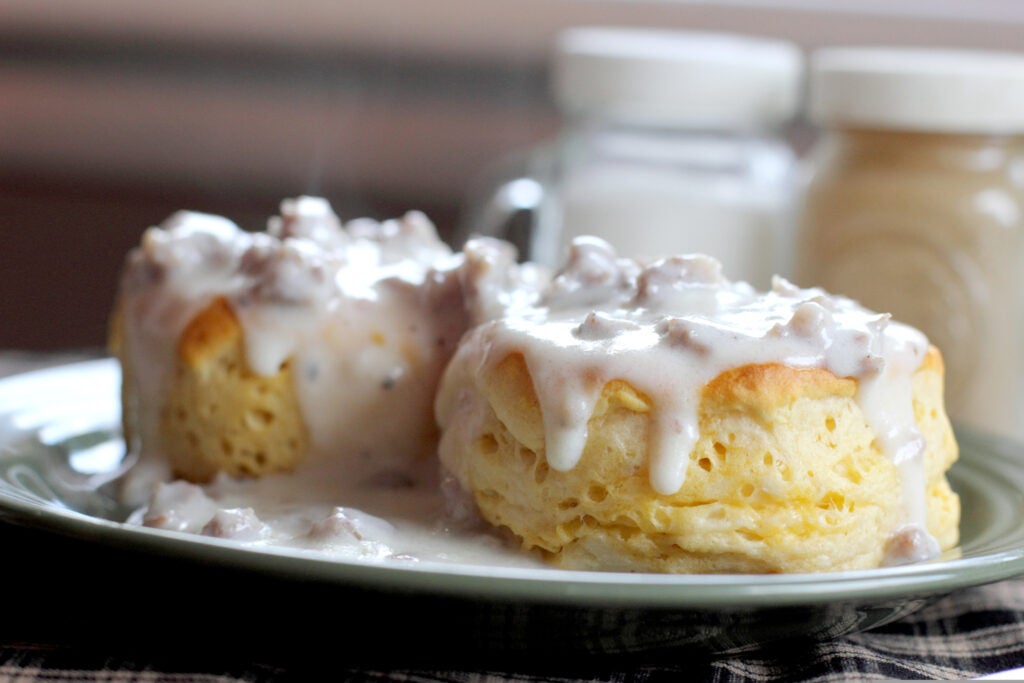
Buttermilk biscuits
Ingredients:
2 cups all-purpose flour
3 teaspoons baking powder
½ teaspoon baking soda
¼ teaspoon salt
3 tablespoons cold butter
3/4 to 1 cup buttermilk
1 tablespoon fat-free milk
Directions:
Preheat your grill or griddle to 350-400 degrees. In a large bowl, combine the flour, baking powder, baking soda and salt — cut in butter until mixture resembles coarse crumbs. Stir in enough buttermilk just to moisten dough.
Turn onto a lightly floured surface and knead three-four times. Pat or roll to 3/4-inch thickness. Cut with a floured 2 1/2-inch biscuit cutter.
Place in a large ungreased cast-iron or other ovenproof skillet.
Brush with milk. Place your cast-iron griddle or skillet on the grill over indirect heat and bake for 20 minutes.





